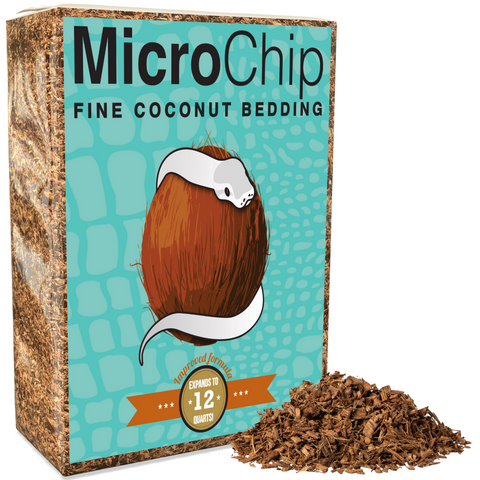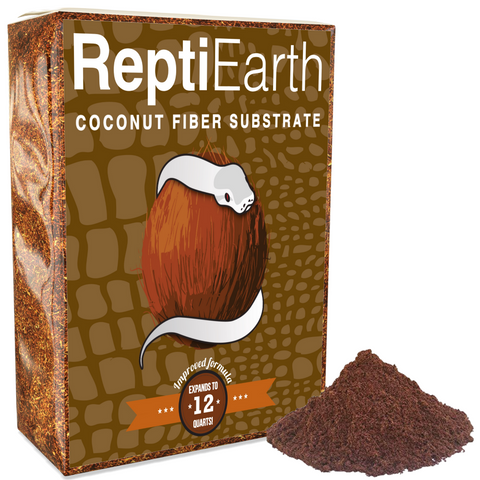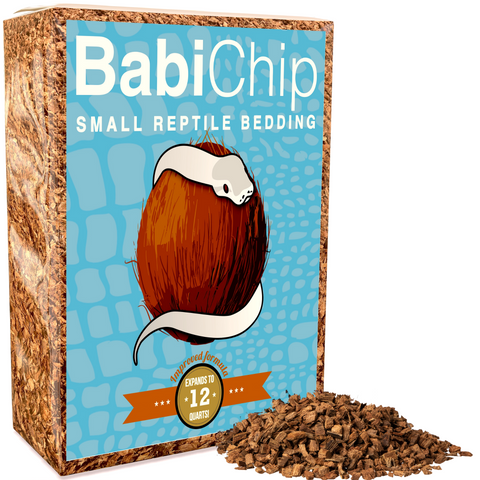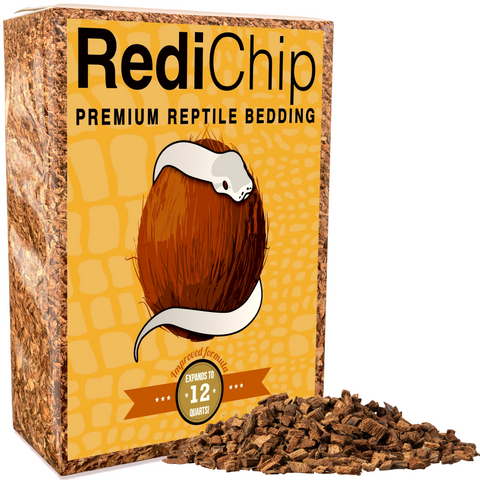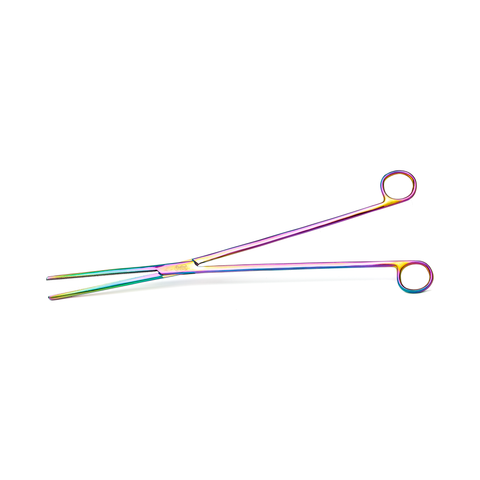Amazonian Giant Centipede
Scolopendra gigantea
Natural History
The Amazonian giant centipede undergoes a direct life cycle, meaning it does not have a larval or pupal stage like insects. Instead, it hatches from an egg as a miniature version of the adult, gradually increasing in size through successive molts. Female centipedes lay clutches of 20 to 50 eggs in moist, protected environments, usually beneath rotting logs or within soil crevices. Juveniles go through multiple molts before reaching full maturity, a process that can take several years depending on environmental conditions such as temperature and humidity. This species can live up to ten years in captivity, though wild individuals may have shorter lifespans due to predation and environmental stressors.
As a highly efficient predator, the Amazonian giant centipede exhibits ambush hunting behaviors, using its rapid movements and powerful venomous forcipules—specialized front legs modified into venom-delivering fangs—to neutralize a wide array of prey. Although primarily nocturnal, it may sometimes engage in crepuscular activity, emerging at dawn or dusk to hunt. It is known to be an opportunistic feeder, consuming insects, arachnids, amphibians, reptiles, and even small mammals and birds. This diversity in diet highlights its role as an apex invertebrate predator. When hunting, it swiftly subdues prey with its venom, which contains a cocktail of neurotoxins and enzymes that induce paralysis and quick digestion. Socially, it is highly solitary and territorial, avoiding interactions with others of its kind except during mating. If threatened by a predator, the centipede exhibits several defensive strategies, including rapid retreat, writhing movements to escape grip, and, if necessary, the use of its venomous bite to deter attackers. Some individuals may also secrete noxious chemicals from specialized glands as an additional form of deterrence.
In its natural habitat, the Amazonian giant centipede plays a critical role in controlling populations of various invertebrates and small vertebrates, helping to maintain ecological balance. As a top invertebrate predator within its range, it regulates prey populations, reducing the numbers of potentially destructive insects and other arthropods that could otherwise reach unsustainable levels. Despite its formidable predatory skills, it faces threats from predators such as birds, large amphibians, and some mammalian species known to prey on arthropods. Its elongated, flexible body and cryptic coloration aid in camouflage, allowing it to blend seamlessly with the leaf litter and undergrowth of the Amazon rainforest. The centipede’s physiological adaptations, including its moisture-retentive exoskeleton and ability to thrive in highly humid microhabitats, allow it to survive in an environment where dehydration could be a constant threat. Its presence in the ecosystem underscores the importance of invertebrates in maintaining biodiversity and ecological stability.
Conservation Status
The Amazonian giant centipede is not currently evaluated by the International Union for Conservation of Nature (IUCN) and therefore does not have an official Red List classification. However, while there is no formal conservation status for this species, anecdotal evidence and regional observations suggest that populations remain relatively stable in much of their natural range. Found primarily in the Amazon Basin and other tropical regions of South America, this species thrives in humid rainforests, where it plays an important ecological role as a top invertebrate predator. Although there are no immediate concerns of large-scale population declines, habitat destruction and collection for the exotic pet trade could pose localized threats to certain populations.
The most pressing threats to the Amazonian giant centipede are habitat destruction and deforestation. Large portions of the Amazon rainforest are being cleared for agriculture, logging, and urban expansion, reducing the availability of suitable microhabitats such as leaf litter and rotting logs, which are essential for the species’ survival. Climate change also has the potential to disrupt native populations by altering rainfall patterns and humidity levels, which could impact the centipede’s ability to regulate moisture and find suitable prey. Additionally, the exotic pet trade plays a role in reducing wild populations, as collectors seek out specimens for commercial sale. Although this species exhibits some resilience due to its secretive nature and adaptability to certain disturbed environments, overharvesting in specific regions may lead to localized declines. In some areas, pesticide use and pollution further threaten the species by contaminating the smaller invertebrates they prey upon or directly exposing them to harmful chemicals.
Efforts to conserve the Amazonian rainforest as a whole indirectly benefit the Amazonian giant centipede. Protected areas such as national parks and biological reserves help maintain essential habitat and prevent large-scale deforestation. Additionally, sustainable land-use initiatives in South America aim to reduce the environmental impact of agriculture and logging, which may help preserve the species’ natural range over time. Captive breeding programs in private collections and zoological institutions contribute to education and reduce the demand for wild-caught specimens, though no official reintroduction programs exist for this species. Public awareness and environmental policies that promote rainforest conservation remain critical for ensuring the long-term survival of this species in its native ecosystem.
Native Range
The Amazonian giant centipede is native to the neotropical regions of South America and parts of the Caribbean, with a distribution that includes countries such as Brazil, Venezuela, Colombia, Peru, Ecuador, and Guyana, as well as Trinidad and other nearby islands. Its range is relatively broad but primarily concentrated within tropical rainforests and humid lowland regions. Although it thrives in dense forested environments, it is also found in secondary forests, degraded habitats, and sometimes in human settlements where suitable microhabitats exist.
The species primarily inhabits tropical rainforests, thriving in warm, humid environments with consistent rainfall throughout the year. Within this macrohabitat, it occupies various microhabitats that provide shelter and access to prey. These include leaf litter on the forest floor, decomposing logs, under rocks, within crevices, and inside fallen tree bark. It prefers dark, damp areas where moisture retention is high, as desiccation poses a significant risk to its survival. In some cases, it is found burrowed in loose soil or hidden within termite mounds and other subterranean cavities, using these spaces both for protection and as hunting grounds.
Climatic conditions in its native range are characterized by year-round warm temperatures, typically ranging between 75 and 86 degrees Fahrenheit. Humidity levels are consistently high, usually exceeding 75%, with frequent precipitation that helps maintain the moist conditions the species requires. The region experiences a distinct wet season and a relatively drier season, though even during drier periods, moisture remains prevalent due to the dense canopy and shaded forest floor. This species is highly dependent on stable humidity levels to prevent dehydration and maintain respiratory function, as its exoskeleton is not adapted for prolonged exposure to dry air.
In terms of elevation, this species is predominantly found in lowland tropical forests, typically below 800 meters above sea level. However, in some regions, particularly along the foothills of the Andes, it may occasionally be found at slightly higher elevations where humidity and temperature conditions remain suitable. Unlike some arthropods that inhabit montane environments, this centipede prefers the warm, moisture-rich conditions of the tropical lowlands.
Critical environmental factors for its survival include an abundance of decomposing organic matter, which supports the invertebrate prey it feeds on, as well as access to stable microclimates with sufficient humidity. The presence of dense vegetation is essential, not only for maintaining humidity but also for providing adequate cover from predators such as amphibians, reptiles, and birds. Substrate type plays a role as well, with the species favoring loosely packed soil and leaf litter that allow it to burrow or hide effectively. In regions where human activity has led to deforestation or habitat fragmentation, the species may be forced to adapt to modified habitats, but it remains reliant on shaded, moisture-rich environments for long-term survival.
Behavior
The Amazonian giant centipede is a nocturnal predator, remaining hidden during daylight hours and emerging at night to hunt. In its natural habitat, it takes advantage of the cover provided by leaf litter, fallen logs, and burrows to avoid detection by predators while stalking prey. Environmental conditions significantly influence its activity, with seasonal fluctuations affecting its behavior. During periods of increased humidity, such as the wet season, individuals may become more active due to the higher availability of prey and favorable temperatures. In contrast, cooler or drier conditions can lead to reduced activity, with some individuals burrowing deeper into the substrate to conserve moisture and energy.
This species is highly solitary and displays aggressive territoriality when encountering conspecifics. Individuals generally avoid one another outside of mating encounters, as conflicts can escalate into cannibalism, particularly when resources are scarce. Mating is primarily seasonal and involves a unique courtship process in which the male deposits a spermatophore for the female to collect. Once fertilized, the female exhibits maternal care by guarding her clutch of eggs and protecting the hatchlings until they are capable of independence. This level of parental investment is not commonly observed in many arthropods, highlighting an unusual aspect of this species’ life history.
Being highly sensitive to environmental stimuli, the Amazonian giant centipede relies on its elongated antennae and numerous sensory hairs to detect vibrations, temperature shifts, and chemical cues. It has poor vision but compensates with an acute ability to perceive movement and locate prey in total darkness. It responds strongly to temperature changes, increasing activity at optimal temperatures and seeking shelter when conditions become excessively hot or cold. Humidity levels also play a critical role, as this species requires high moisture to prevent desiccation; it frequently seeks out microhabitats with stable humidity levels.
A powerful and versatile predator, this centipede actively hunts a wide range of prey, including insects, amphibians, reptiles, small mammals, and even birds. It uses a combination of speed, agility, and venom to subdue its victims. Its forcipules, modified front legs that function as venomous fangs, deliver a potent neurotoxic venom that paralyzes prey almost instantly. This venom is highly effective against a wide variety of animals, allowing the centipede to consume prey much larger than itself. In addition to its predatory prowess, this species also employs several defensive strategies, including rapid retreat, cryptic coloration, and the ability to deliver painful bites if threatened. It may also engage in autotomy, shedding a portion of its legs to escape predators.
In captivity, behaviors differ significantly from those observed in the wild due to the controlled nature of the environment. While its nocturnal habits remain, captive specimens may display reduced hunting behaviors if provided with pre-killed prey, which eliminates the need for active stalking and ambush tactics. Some individuals may become accustomed to routine feeding, unlike their wild counterparts who must constantly search for food. Enclosed spaces can also influence territoriality—while wild centipedes typically avoid one another, instances of aggression in captivity can be heightened if multiple individuals are housed together. Likewise, stress responses may be amplified in unnatural conditions, especially if a captive enclosure lacks sufficient hiding areas or if the environment is frequently disturbed. Providing an enclosure that mimics its natural habitat, incorporating deep substrate, ample hides, and appropriate humidity, is essential for promoting natural behaviors and minimizing stress.
Captivity Requirements
Enclosure Design
The Amazonian giant centipede requires a secure and well-ventilated enclosure that accommodates its size and natural behaviors. Juvenile specimens can be housed in enclosures measuring at least 12"L x 12"W x 13"H, while adults, which can grow over 12 inches in length, should have a minimum enclosure size of 24"L x 18"W x 18"H. Larger enclosures are beneficial as they allow for greater movement and enrichment opportunities.
The enclosure should be constructed from escape-proof materials, such as thick acrylic, pvc, or glass, with a secure, tightly-fitting lid to prevent escapes. Centipedes are notorious escape artists, capable of squeezing through small gaps and climbing smooth surfaces. Ventilation should be provided via fine mesh or drilled holes, ensuring airflow without compromising security.
Inside the enclosure, the layout should closely replicate the centipede's natural humid and forested environment. Provide a deep substrate layer for burrowing, cork bark or hollow logs for hiding, and vertical structures such as branches or slabs of bark to support climbing. A cluttered environment helps reduce stress by providing ample cover. Ensure that any climbing structures are stable to prevent injury from falls.
Lighting and Heating
While Amazonian giant centipedes are primarily nocturnal and do not require UVB lighting, a proper day/night cycle (photoperiod) is still essential for maintaining their circadian rhythm. A 12-hour light/dark cycle is recommended, with low-intensity UVB lighting being suitable for viewing without disturbing their natural behaviors.
Temperature regulation is crucial, as these centipedes are native to warm, tropical climates. The enclosure should maintain an ambient temperature of 75-82°F, with a slightly warmer basking area reaching 85°F. Nighttime temperatures can drop to 72°F, but should not fall below 70°F. Heat should be provided via an under-tank heating pad (UTH) or ceramic heat emitter (CHE), both controlled by a reliable thermostat to prevent overheating. Heat rocks should never be used, as they pose a risk of burns.
Substrate and Enrichment
A deep, moisture-retentive substrate is essential for the well-being of the Amazonian giant centipede. The substrate should be at least 4-6 inches deep for juveniles and 6-8 inches deep for adults to allow for burrowing. A mix of ReptiEarth, BabiChip, and organic topsoil works well, providing a balance of moisture retention and aeration. Avoid substrates that can cause impaction, such as calcium sand or pure clay-based materials.
To enrich the enclosure, incorporate elements that encourage natural behaviors like burrowing, climbing, and ambushing prey. Cork bark tubes, leaf litter, and strategically placed rocks provide shelter and security. Adding live plants, such as pothos or ferns, can enhance humidity levels while creating a more naturalistic setting. Since centipedes are highly reclusive, ensuring multiple hides throughout the enclosure will help reduce stress.
Humidity and Hydration
Amazonian giant centipedes thrive in high humidity levels ranging from 75-85%. To maintain appropriate humidity, mist the enclosure lightly once or twice daily, ensuring the substrate remains slightly damp but not waterlogged. Using a humidity-retaining substrate mix and incorporating sphagnum moss can help sustain stable moisture levels. A hygrometer should be used to monitor humidity accurately.
Providing fresh water is essential, despite the centipede's ability to derive moisture from its environment. A shallow, sturdy water dish should always be available, filled with dechlorinated water. Regular misting also allows the centipede to drink from droplets, mimicking natural hydration methods. If humidity drops too low, consider using an automated misting system or fogger to supplement manual misting.
By following these guidelines, keepers can ensure their Amazonian giant centipede remains healthy, stress-free, and able to express its natural behaviors in captivity.
Diet & Supplementation
In its natural habitat, this species is a formidable carnivorous predator that preys on a wide variety of animals, utilizing its size, speed, and venom to subdue prey. Its diet includes invertebrates such as large insects, spiders, and other arthropods, as well as vertebrates like small amphibians, reptiles, rodents, and even birds. In some cases, it has been observed preying on bats by climbing cave walls and capturing them in mid-air. This dietary flexibility is one of the keys to its success as a predator in the tropical rainforests it inhabits, allowing it to exploit multiple food sources depending on availability and opportunity.
This species employs an active hunting strategy rather than ambush predation. It uses its highly sensitive antennae to detect chemical cues and vibrations from potential prey, allowing it to track and locate food in total darkness or dense leaf litter. Once close enough, it rapidly strikes with its sharp forcipules—modified front legs that deliver a potent venom capable of paralyzing prey almost instantly. The venom contains a complex mix of neurotoxins, enzymes, and other compounds that immobilize prey and begin the process of digestion. Strong, segmented legs provide the necessary grip to subdue struggling victims, while sharp mandibles tear soft tissue for consumption. Unlike many ambush predators, this species thrives on its ability to actively search for food, making it an efficient hunter in its environment.
Dietary needs and feeding behavior change throughout its life cycle. Juveniles primarily feed on smaller prey items such as crickets, cockroaches, and other arthropods, as their venom and physical capabilities are not yet sufficient to tackle larger vertebrates. As they grow, their appetite and prey size increase, and larger individuals exhibit more frequent predation on vertebrate species. Seasonal variations in prey availability may also influence feeding behavior, with increased hunting activity during humid seasons when insect populations surge. While they can endure short periods of food scarcity, they are opportunistic feeders that will consume food whenever it is available.
In captivity, replicating the natural diet poses certain challenges but can be managed effectively with proper planning. A diet consisting primarily of appropriately sized invertebrates, such as crickets, cockroaches, mealworms, and superworms, provides a strong nutritional foundation. Occasional offerings of small vertebrates, such as pre-killed pinky mice or feeder anoles, may be incorporated for large individuals, although this is not strictly necessary for their health. Since captive diets lack the diverse gut contents found in wild prey, supplementation with calcium and vitamins may be necessary, particularly for juveniles undergoing rapid growth. Dusting insects with a high-quality calcium powder ensures proper exoskeleton and muscle development, while gut-loading feeder insects with nutritious foods enhances overall dietary value.
Some common feeding challenges in captivity include food refusal, overfeeding, and improper prey selection. Stress from inadequate environmental conditions, excessive handling, or improper humidity can lead to declines in appetite. Offering a variety of prey items can encourage feeding behavior, especially if the centipede is accustomed to a specific diet in the wild. Overfeeding can lead to obesity and shortened lifespans, so maintaining an appropriate feeding schedule—every few days for juveniles and once a week or longer for adults—is crucial. Introducing live prey that encourages natural hunting behavior provides enrichment, but care must be taken to ensure that uneaten prey does not harm the centipede. By closely mimicking its natural dietary habits and maintaining optimal feeding conditions, keepers can ensure the long-term health and vitality of this aggressive and fascinating predator.
Reproduction
The Amazonian giant centipede is an oviparous species, meaning it reproduces by laying eggs rather than giving birth to live young. Males do not have copulatory organs and instead produce a spermatophore, a protein parcel containing sperm, which they deposit on the ground for a female to find. When the female encounters the spermatophore, she absorbs it and uses it to fertilize her eggs.
Once fertilized, the female deposits between 15 and 60 eggs in a burrow in the soil. She coils around the eggs to protect them and regularly licks them to prevent fungal growth. These animals may breed twice each year. The difference between sexes is difficult to detect, even in adults.
Incubation Process
Females meticulously care for their clutch, ensuring consistent temperature and humidity while preventing fungal or bacterial infections by regularly cleaning the eggs. In captivity, the optimal incubation conditions include a temperature range of 75 to 82 degrees Fahrenheit and a humidity level between 75-85 percent. A moist, well-draining substrate such as a mix of peat moss, ReptiEarth, and vermiculite is ideal for maintaining necessary moisture without encouraging mold growth.
Egg incubation duration varies based on environmental factors but generally lasts between four to eight weeks. Unlike some reptile species, centipede embryos develop without temperature influencing sex ratios. However, extreme fluctuations in temperature or humidity can result in desiccation, fungal infections, or developmental issues.
Hatching Process and Maternal Care Once the eggs hatch; the neonates emerge as delicate, pale versions of their adult counterparts. They remain in close contact with the mother, clinging to her body in a behavior known as maternal guarding. During this period, which lasts approximately three months, the mother continues to provide protection and moisture regulation. She often carries the young on her underside and wraps herself around them for additional security. If the mother is disturbed or feels threatened, she may abandon or even consume her young, making minimal interference essential in captivity.
Neonate Care Requirements After detaching from the mother; Neonates should be carefully separated into individual enclosures to prevent cannibalism, a common issue in centipede rearing. Suitable enclosures should have secure lids, as these centipedes are adept escape artists. Each container should maintain a humidity level of 75-85 percent, with temperatures held between 75 to 82 degrees Fahrenheit. Providing adequate ventilation while ensuring moisture retention is crucial for their survival.
For substrate, a layer of moist ReptiEarth, peat moss, or a soil mix should be used, providing burrowing opportunities. Small hides such as bark pieces or leaf litter offer security, reducing stress and promoting healthy development.
First Feeding and Growth Neonates undergo their first molt within seven to ten days of independence, after which they are ready to accept food. Initial meals should consist of pinhead crickets, small roaches, or tiny mealworms, offered every two to three days. Overfeeding can lead to uneaten prey decomposing in the enclosure, increasing the risk of mold and mites. Fresh water should be available through light misting, allowing the neonates to drink droplets from the enclosure walls or substrate.
Health Concerns and Developmental Milestones Common issues in neonate centipedes include desiccation, mold growth, and cannibalism. Regular monitoring of humidity levels and ensuring proper enclosure separation mitigate these risks. Molting frequency varies, but young centipedes typically molt every few weeks in early stages, gradually slowing as they mature. Growth rates depend on temperature and feeding frequency, with juveniles reaching sexual maturity at approximately two years old.
Conclusion
The Amazonian giant centipede is a remarkable arthropod that exemplifies adaptability, predatory efficiency, and complex life history traits. As one of the most formidable invertebrate predators in its native environment, it plays a crucial role in maintaining ecological balance by controlling populations of both invertebrate and small vertebrate prey. Its physiological and behavioral adaptations, including potent venom, rapid locomotion, and sensory specialization, make it highly effective at surviving in the humid, densely vegetated regions of the Amazon rainforest and surrounding areas.
Despite its imposing nature, this species faces challenges in its natural habitat, including habitat destruction due to deforestation, climate change, and collection for the pet trade. While its broad distribution and adaptation to various microhabitats contribute to its overall resilience, localized threats could impact certain populations. Conservation efforts aimed at preserving tropical rainforests indirectly benefit this species by maintaining the ecosystems it relies upon for shelter, prey availability, and reproduction.
For those considering keeping this species in captivity, replicating natural conditions as closely as possible is essential for its health and well-being. Proper humidity control, suitable hiding spaces, and an appropriate diet reflective of its diverse prey base are critical for maintaining optimal conditions. Additionally, understanding its defensive nature, solitary behavior, and potential risks associated with handling is necessary for responsible husbandry.
Ultimately, the Amazonian giant centipede remains a fascinating subject of study, providing valuable insights into invertebrate biology, predator-prey dynamics, and behavioral adaptations. Whether observed in the wild or maintained in a controlled environment, it serves as a striking example of the complexity and resilience of arthropod predators in tropical ecosystems. Ensuring its continued presence in nature requires sustained conservation efforts and a greater appreciation for the vital ecological roles played by invertebrates.



